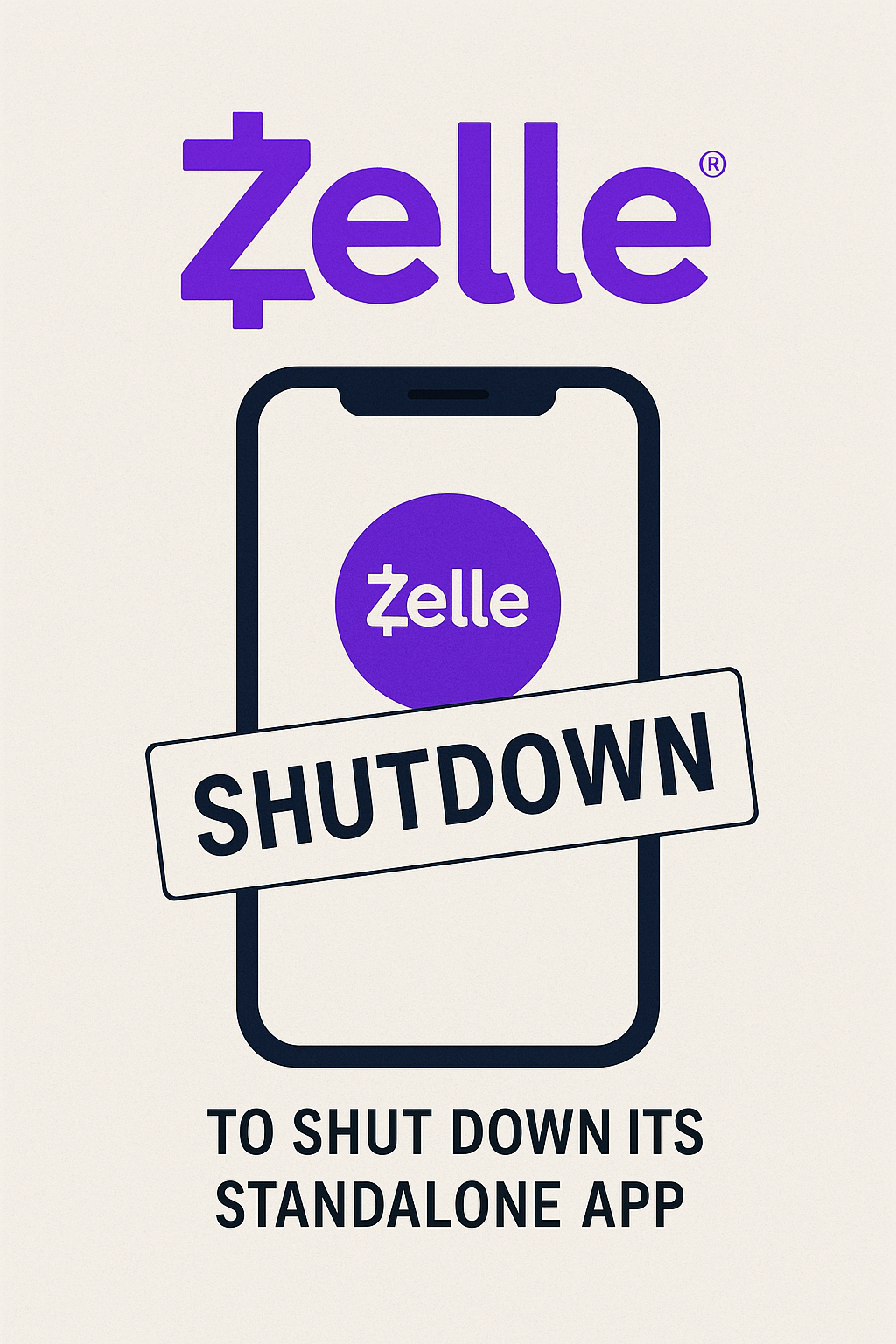Zelle to Shut Down Its Standalone App

Zelle to Shut Down Its Standalone App: What This Means for Users and the Future of Instant Payments
In a surprising move that is rippling across the financial technology landscape, Zelle — the popular peer-to-peer (P2P) payment network — has announced it will be shutting down its standalone app. For millions of users who have relied on Zelle for quick, no-fee money transfers, this raises several pressing questions: Why is the app being discontinued? What does this mean for existing users? And what’s next for the instant payments ecosystem?
In this post, we’ll dive into all the details, unpack the reasons behind this strategic decision, and help you understand what to expect in the months ahead.
First, A Quick Refresher: What is Zelle?
Zelle launched in 2017 as a joint venture between major U.S. banks looking to compete with the likes of Venmo, Cash App, and PayPal. Unlike its competitors, Zelle had a unique advantage: it was integrated directly into participating banks’ apps, allowing users to send money almost instantly without the need for a separate wallet or balance.
Over the years, Zelle carved out a significant share of the P2P payments market. In 2023 alone, Zelle users sent over $600 billion across hundreds of millions of transactions. With its speed, convenience, and broad bank support, Zelle became a go-to option for many — especially those who preferred to keep their transactions within the traditional banking ecosystem.
Why is Zelle Shutting Down Its App?
The standalone Zelle app, separate from banking apps, was intended to provide access to users whose banks did not yet support Zelle directly. However, as of 2025, over 97% of U.S. bank accounts are now compatible with Zelle through their own mobile apps or online banking platforms.
Here are some of the major reasons behind the decision:
-
Widespread Bank Integration
-
Most users now access Zelle through their bank’s app, reducing the need for a separate platform.
-
Maintaining a standalone app duplicates efforts and increases security and operational risks.
-
-
Focus on Security and Fraud Prevention
-
Consolidating services within secure bank environments helps reduce fraud risks.
-
Banks already have robust security protocols, making it safer for users to transact.
-
-
Streamlining the User Experience
-
Zelle wants to eliminate confusion between its standalone app and bank-integrated versions.
-
A unified experience means fewer touchpoints, fewer updates, and a more seamless process.
-
-
Cost Efficiency
-
Maintaining two platforms is costly. Shutting down the standalone app allows Early Warning Services (Zelle’s parent company) to allocate resources more effectively.
-
In a statement, a Zelle spokesperson said:
“We’ve seen tremendous growth through our bank partners, and today, the vast majority of Zelle transactions happen directly within bank apps. By focusing our efforts there, we can continue to provide safe, fast, and simple payments to millions of consumers.”
What Happens to Existing Users?
If you’ve been using the standalone Zelle app, don’t panic. Here’s what you need to know:
-
Transition Period: Zelle will provide a grace period before the app fully shuts down. Notifications and reminders will be sent to app users well in advance.
-
Your Funds Are Safe: Since Zelle doesn’t store funds (transactions move directly between bank accounts), there’s no balance to withdraw or transfer.
-
Action Required: Users of the standalone app will need to transition to their bank’s app for continued access to Zelle services. Zelle is expected to publish a list of supported banks and instructions to ease this transition.
-
Account Information: Your contact information (email and phone number) will remain linked to your bank account, so you can continue receiving payments without interruption.
What Does This Mean for the Future of P2P Payments?
Zelle’s decision reflects a broader trend in the payments space: consolidation and tighter integration with traditional banking services. As P2P payments become a standard feature of digital banking, standalone apps may become less necessary.
Key Takeaways for the Industry:
-
Increased Trust in Bank Ecosystems: Users are growing more comfortable with bank-integrated services, valuing their security and reliability.
-
Competition Remains Fierce: Apps like Venmo, Cash App, and PayPal still maintain large user bases, and their social features (like payment feeds and rewards) continue to attract younger demographics.
-
Focus on Innovation: Zelle is expected to focus on expanding its capabilities through bank apps, possibly introducing new features like small business payments, bill splitting, or even international transfers.
Final Thoughts
While the shutdown of the standalone Zelle app marks the end of an era, it’s not the end of Zelle itself. On the contrary, this move represents a strategic pivot toward deeper integration with the banking system — a space where Zelle has always thrived.
For users, the transition should be relatively smooth, especially since most already use Zelle through their bank’s app. For the industry, it’s a reminder that the future of payments lies in simplicity, security, and seamless experiences embedded directly in the services we use every day.
So if you’re a Zelle app user, take this as your cue to migrate to your bank’s app soon — and rest assured, instant payments aren’t going anywhere.





